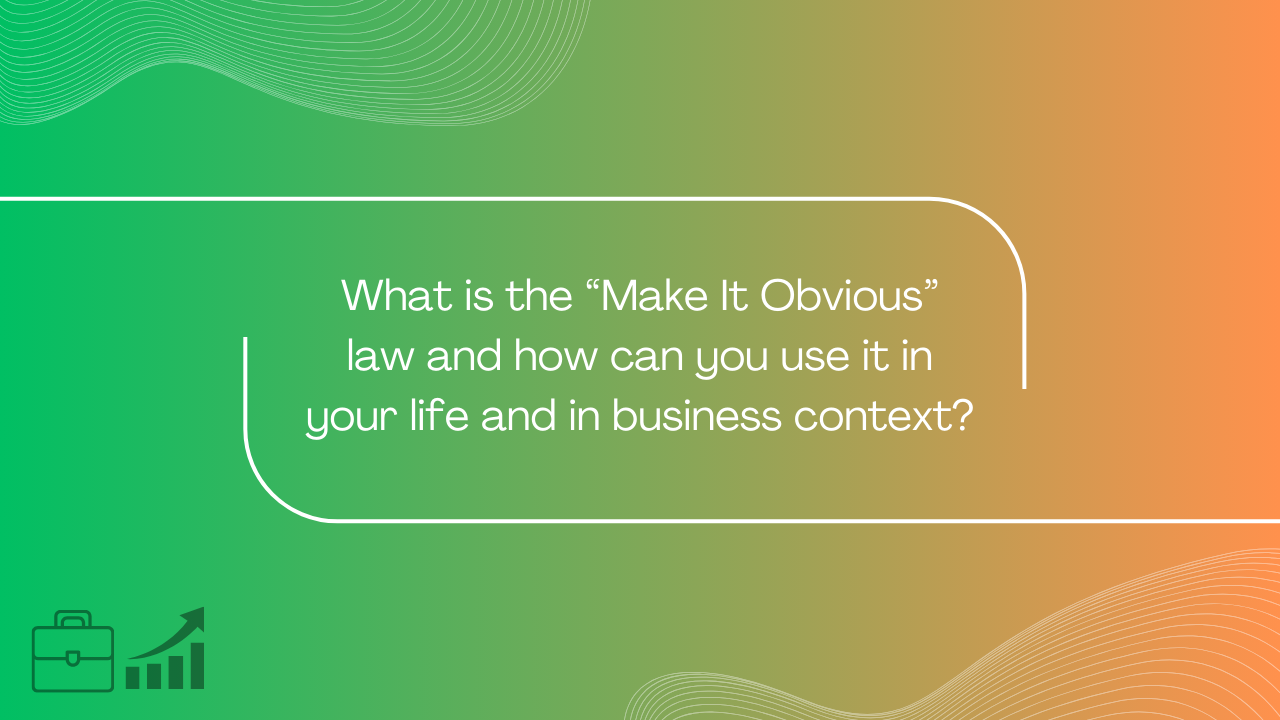What is the “Make It Obvious" law and how can you use it in business context?

First law from “Atomic Habits” book sounds: Make it obvious. In this article I would like to present what is this approach, what are advantages and how can you use it in your life and business context.
What is the meaning of “Make it obvious"?
It is a fundamental principle related to making it easier to introduce and strengthen positive habits. To achieve this, you should collect important signals or reminders for the particular habit and place them in your environment in the most visible way. And that’s actually all about the theory – this law is simply based on the assumption, that people are more likely to take actions that are highlighted in their environment.
How can you use it in your life?
Useful examples of redesigning your environment to make some activities more obvious:
🟢 Do you want to drink more water? Put the bottle on your desk, near your bed and in other places, where you spend a lot of time.
🟢 Do you want to read books every day? Place book on the pillow.
🟢 Do you want to run in the morning? Prepare your exercise clothes and shoes at the day before and put in the place, where you can see it easily.
Thanks to such environment preparation proper actions will be natural and obvious choice. It will be easy to do what is really good for us, almost automatically.
How can you use it in business context?
As you know, the more visible and obvious the cue is, the more likely is to be noticed and create the right habit. It is the reason, why ads, which you often see seem to be screaming and insistent. They are intended to encourage you as much as possible and make the offer obvious to you. Second example are notifications in your phone. Some of them can be irritating, but the truth is that the more notifications we get, the more often we get involved in a given product or service.
On the other hand, if something is hidden or difficult to access, we reach for it much less often. Ads at the bottom of the page are clicked less often than banners at the top, and products on the lowest store shelves sell worse. Companies also often use this in a less favorable way, e.g. by hiding the “delete account” button deep in the settings.
Some example advices:
🟠 Place the most profitable products in visible places.
🟠 Simplify user interface.
🟠 Organise the work environment of your employees (most important tasks should be exposed).
Conclusion
Remember to adjust this approach to your own situations! It is universal, so you can use it widely and in various cases. Good luck!